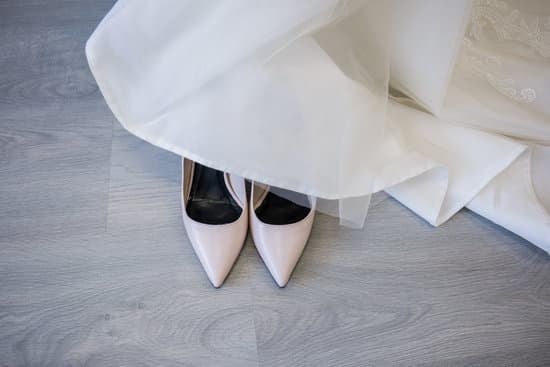In the vast landscape of cultural traditions, wedding rings hold a special place in symbolizing the eternal bond between couples. The practice of exchanging rings as a gesture of commitment has been deeply ingrained in numerous societies for centuries. With that said, do Germans wear wedding rings? This article seeks to delve into the traditional and modern customs surrounding wedding rings in Germany, shedding light on their history, symbolism, and contemporary relevance.
The custom of wearing wedding rings in Germany can be traced back to centuries-old traditions, with a rich cultural significance that continues to endure to this day. From exploring the historical roots of this practice to examining how it is incorporated into modern-day ceremonies, we will uncover the evolution and enduring importance of wedding rings in German culture.
Beyond just an outward display of commitment, German wedding rings also carry deep symbolism and meaning. By dissecting the different styles and designs of these rings through the lens of tradition and contemporary trends, we can gain insight into how they reflect the values and beliefs upheld by German couples.
Through personal stories and interviews with those immersed in German wedding traditions, we will gain a firsthand understanding of how individuals perceive and engage with the tradition of wearing wedding rings. Additionally, by contrasting German customs with those of other countries, we hope to offer a comprehensive exploration of this cherished marital tradition. Stay tuned as we embark on this fascinating journey through the world of German wedding rings.
History of Wedding Rings in Germany
Origins of Wedding Rings in Germany
The history of wedding rings in Germany can be traced back to ancient times, with the tradition believed to have originated from the Romans. The practice of exchanging rings as a symbol of unity and commitment was solidified during the medieval period, where it became customary for couples to exchange rings during their marriage ceremony. The rings were typically made from more affordable metals like silver or brass, as gold was often reserved for the upper class.
Cultural Significance of Wedding Rings
In German culture, wedding rings hold immense significance and are considered a representation of the bond between spouses. The circular shape of the ring is said to symbolize eternity and the unending love and commitment between partners.
It also signifies the unbroken union between two people who have chosen to spend their lives together. Additionally, traditional German folklore suggests that wearing the wedding ring on the fourth finger of the left hand connects directly to the heart via a vein, further emphasizing its emotional importance.
Evolution of Wedding Ring Customs
While the core meaning behind wedding rings remains unchanged, there has been an evolution in German wedding ring customs over time. With modern influences and global trends, there is now a wider variety of materials, styles, and designs available for couples to choose from when selecting their wedding bands. This shift reflects changing societal values while still upholding the deeply rooted significance of these timeless symbols within German culture.
Modern Customs and Practices
In modern-day Germany, the tradition of wearing wedding rings still holds significant cultural value. Despite shifting societal norms and changing attitudes towards marriage, the practice of exchanging and wearing wedding rings remains a cherished custom for many Germans.
Traditional Symbolism Maintained
The act of wearing wedding rings in Germany is deeply rooted in symbolism and tradition. For many Germans, the ring represents eternal love and commitment between partners. It serves as a visual symbol of the bond shared by a married couple, signifying their unity and dedication to one another. This enduring significance has helped solidify the continued observance of wearing wedding rings as an integral part of German marital customs.
Contemporary Trends and Designs
While the tradition of wearing wedding rings remains steadfast, there has been an evolution in the styles and designs preferred by modern German couples. Many are opting for sleek, minimalist bands that reflect current fashion trends, while others choose to honor their heritage by selecting traditional designs reminiscent of historical German jewelry craftsmanship. The diversity in ring choices mirrors the diverse preferences and lifestyles embraced by contemporary German society.
Although some cultural practices have fluctuated over time, it is evident that Germans continue to attach great importance to the exchange and adornment of wedding rings. The enduring tradition speaks volumes about the enduring significance of marriage within German culture.
Different Styles and Designs of German Wedding Rings
German wedding rings come in a variety of styles and designs, reflecting the rich history and cultural significance of these symbols. Traditional German wedding rings often feature classic elements such as gold or silver bands adorned with intricate engravings or filigree details. These timeless designs symbolize the enduring commitment and love between the couple, honoring the deep-rooted traditions of marriage in German culture.
In recent years, there has been a shift towards more contemporary styles of wedding rings in Germany. Many couples are opting for sleek and minimalist designs, featuring clean lines and sophisticated finishes. Some choose to personalize their rings by incorporating modern materials such as titanium or platinum, adding a unique twist to this age-old tradition. Despite these evolving trends, the sentiment behind the wedding ring remains unchanged – a tangible symbol of love, unity, and commitment.
In addition to traditional and contemporary designs, German wedding rings often hold symbolic elements that reflect the values and beliefs of the couple. For example, some may choose rings with Celtic knots to represent eternal love, while others may opt for engraved messages or birthstones to personalize their bands. These diverse styles and designs highlight the individuality of each couple while honoring the timeless tradition of exchanging wedding rings as a symbol of unity.
Symbolism and Meaning of Wedding Rings in German Culture
In German culture, wedding rings hold a deep and significant meaning that goes beyond just being a piece of jewelry. The tradition of wearing wedding rings can be traced back to ancient times, where they were seen as a symbol of eternal love and commitment. This tradition has continued into modern times, and the importance of wedding rings in German culture is still very much alive.
The exchange of wedding rings in Germany symbolizes the vows and promises made by the couple to each other. It is a physical representation of their love, loyalty, and commitment. In German culture, the wedding ring is worn on the fourth finger of the left hand, which is believed to have a vein connected directly to the heart. This symbolic gesture emphasizes the emotional connection between the couple.
| German Wedding Ring Style | Description |
|---|---|
| Classic Bands | Sleek and timeless, these bands symbolize enduring love. |
| Contemporary Designs | Intricate details and modern styles represent individuality and personal expression. |
How Germans Incorporate Wedding Rings Into Their Wedding Ceremony
In Germany, the exchange of wedding rings is a deeply significant part of the marriage ceremony. It symbolizes the couple’s commitment to each other and their promise to stand by one another through thick and thin. Here are some ways that Germans typically incorporate wedding rings into their special day:
- Traditional Exchange: During the wedding ceremony, the couple exchanges their wedding rings as a symbol of their commitment to each other. This exchange often takes place after they have exchanged vows, representing the sealing of their promises to each other.
- Ring Blessing: In some regions of Germany, it is common for the wedding rings to be blessed before they are exchanged. This tradition holds religious significance and is seen as a way to ask for blessings on the couple’s marriage.
- Ring Bearer: In some weddings, especially those with a more traditional focus, a ring bearer may be part of the ceremony. This person typically carries the couple’s wedding rings down the aisle on a decorative pillow or cushion before presenting them to the couple during the ceremony.
The incorporation of wedding rings into German wedding ceremonies varies according to different regions and personal preferences. However, what remains consistent is that these symbols are an essential part of tying the knot and embarking on a lifetime journey together as a married couple.
Personal Stories and Experiences
When it comes to wedding traditions, the use of wedding rings is a significant aspect of many cultures around the world. In Germany, the tradition of exchanging wedding rings dates back centuries and continues to be an important part of modern marriages. To better understand this tradition, interviews were conducted with several Germans regarding their wedding ring customs.
During these interviews, it became evident that the practice of wearing wedding rings remains prevalent in Germany. The majority of those interviewed stated that wearing wedding rings is a symbol of commitment, love, and unity. Many mentioned that it is considered an essential tradition that holds great importance in their culture.
Interestingly, some Germans mentioned different styles and designs when it comes to their wedding rings. While traditional gold bands are still widely popular, some individuals mentioned opting for more contemporary designs such as mixed metals or unique engravings. This reflects the diversity within German culture while still maintaining the significance of the tradition.
| Aspect | Data |
|---|---|
| Importance of Wedding Rings in German Culture | Significant symbol of commitment, love, and unity |
| Variety in Designs | Traditional gold bands to contemporary designs like mixed metals or unique engravings |
Cultural Differences
When it comes to wedding ring customs, different countries have their own unique traditions and practices. German wedding ring customs are no exception, and they offer an interesting contrast to those of other countries around the world.
To start, let’s take a look at some of the common traditions and practices related to wedding rings in Germany:
- In Germany, it is customary for both men and women to wear a wedding ring. This is different from some other countries where only the woman may wear a ring.
- Wedding rings in Germany are often simple and understated, with a focus on high-quality materials and craftsmanship. This is in contrast to some other countries where elaborate and ornate designs may be more common.
- In some cultures, the exchange of wedding rings is a central part of the wedding ceremony itself. However, in Germany, the exchanging of rings often takes place before or after the official ceremony.
Furthermore, when comparing German wedding ring customs with those of other countries, it becomes evident that there are significant variations in symbolism and meaning attached to the rings. While in some cultures the ring symbolizes eternity or unending love, Germans may have their own unique interpretations.
Overall, exploring these cultural differences can provide valuable insights into how different societies view and value the tradition of wearing wedding rings. It highlights the diverse ways in which this practice is incorporated into marriage ceremonies around the world.
Conclusion
In conclusion, the tradition of wearing wedding rings holds a significant importance in German culture and society. Throughout history, wedding rings have played a crucial role in symbolizing love, commitment, and unity between couples. While the styles and designs may have evolved over time, the cultural significance remains deeply rooted in German customs.
Despite modernization and changing trends, Germans continue to embrace the tradition of wearing wedding rings. Whether it’s traditional bands or contemporary designs, the symbolism and meaning behind these rings remain unchanged. The exchange of wedding rings during the marriage ceremony is a cherished moment that reflects the deep-rooted values of love and commitment in German relationships.
Through personal stories and experiences shared by Germans about their wedding ring traditions, it is evident that these rings hold sentimental value and are considered as important symbols of love and partnership. Although there may be differences in wedding ring customs with other countries, the significance of wedding rings in German culture stands strong. As such, it is clear that the tradition of wearing wedding rings will continue to be an integral part of German weddings for generations to come.
Frequently Asked Questions
Which Cultures Do Not Use Wedding Rings?
Some cultures that do not traditionally use wedding rings include those in parts of Asia, such as China and Japan, where other forms of jewelry or symbolic items may be exchanged during wedding ceremonies. In some indigenous cultures, traditional customs may also dictate different practices for symbolizing marriage.
What Is the German Tradition for Engagement Rings?
In German tradition, engagement rings are not as common as they are in some other countries. Instead, the focus is on the exchange of wedding bands during the marriage ceremony. However, there are regional variations within Germany, so some couples may choose to also exchange engagement rings as part of their pre-marriage customs.
Do German Men Wear Engagement Ring?
Typically, German men do not wear engagement rings as part of their cultural tradition. The emphasis is more on the exchange of wedding bands during the actual marriage ceremony rather than on pre-marriage jewelry for both partners.
However, modern couples in Germany may adopt various practices from other cultures and personal preferences when it comes to engagement and wedding jewelry.

I have been involved in marriages for over 20 years helping couples and singles understand more about them.





